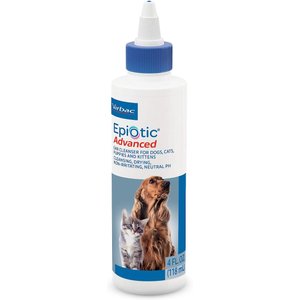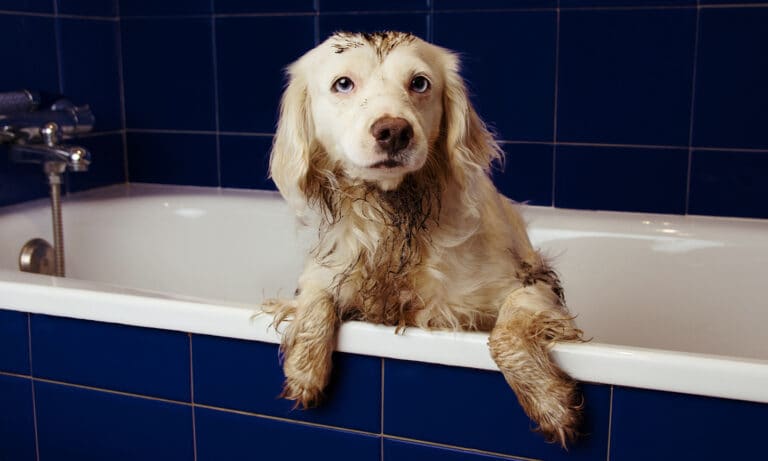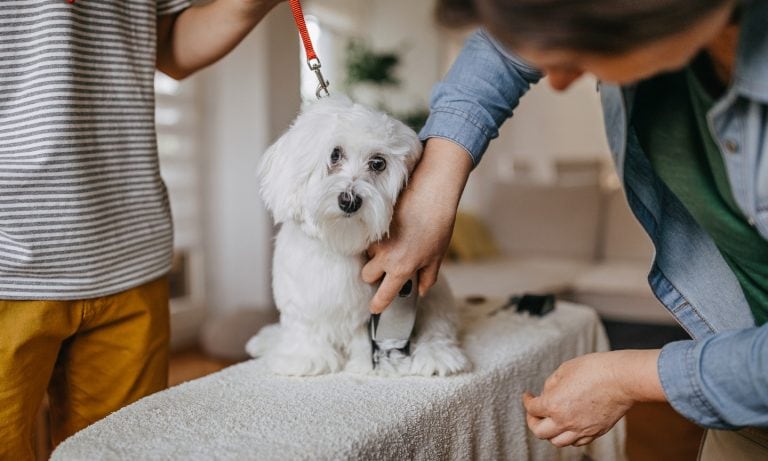Let’s face it: the life of a pup parent can get a bit smelly from time to time. From picking up poop and scooping out (less-than-fragrant) food cans to trying to determine what in the world your dog just rolled in, the job of a pet owner should sometimes include a set of nose plugs!
But when the odor comes from his ears, it’s a different matter. Smelly dog ears are caused by bacteria and yeast that has fermented inside the canal, says Jeffery Levy, DVM, a veterinarian in New York City. “A dog’s ear is covered by an ear flap called the pinna, which creates a dark, moist space for (smelly) growth,” he explains.
Well, no one wants to deal with a full-on ear infection, or the smell that comes with it. So it’s important to know how to clean dog ears and maintain dog ear care to prevent odor from developing in the first place.
Note his behavior. Ear odor is just one indication that your pup may have developed a problem. Whether they’re short and pointy or big and floppy, be sure to check your pup’s ears often and be aware of any unusual dog behavior. Is your pet paying more attention than usual to his ears? “An infected ear can become a source of torment for a dog, which can lead to scratching and even bleeding inside the ear flap or the gradual closure of the ear canal,” explains Levy. “Other signs include scratching, head shaking and rubbing the ears along the floor.” If an infection is left untreated, surgery may be required.
Get an exam. Be in touch with your veterinarian if you discover that your dog’s ears are smelly. Smelly ears could lead to otitis, which is an infection. Most ear infections are caused by inflammation from allergies. It’s this inflammation that allows the overgrowth of yeast or bacteria—and the resulting smell, notes Ann Hohenhaus, DVM, a veterinarian at the Animal Medical Center in New York City. Speak with your pet’s doctor, as testing is often required to first identify the infectious organism and then to choose the appropriate medication.
Try an at-home solution: A product like Halo Cloud 9 Herbal Ear Wash is great for removing cat and dog ear wax. We also like TruDog Clear Me Ear Cleaner, a gentle ear cleaner with aloe vera. Or consider the aptly named FURminator Ear Cleaner for canines and felines alike, which is free of parabens, colors and dyes. But don’t be tempted to stick a cotton swab into your pup’s ear. “Using this kind of item could injure the delicate internal structures of the ear,” warns Hohenhaus.
Flush away debris. Your vet can also prescribe a special pet ear-cleaning solution, which is Levy’s preferred method of cleaning dog ear wax. “Flush the ear with the wash according to the directions, and then massage the outside, following the path of the ear canal downwards to dislodge debris and dog ear wax,” he says. Virbac Epi-Otic Advanced Ear Cleaner can be used to clean sensitive doggy ears and has a pleasant citrus scent. Or pick up Vet’s Best Ear Relief Wash for your pooch. Be prepared for your dog to shake his head during this process. Some vets suggest wrapping a cotton ball around your finger to make sure that you don’t penetrate too deeply, adds Levy.
Clean off dirt and keep the ears dry. If your dog likes to roll in grass and leaves, do your best to brush away dirt and debris after each walk or play session. Another way to prevent odor (and more serious consequences) is to avoid getting additional moisture in your dog’s ears. “Swimming, of course, can lead to excess water in the canal, so some pet owners put cotton balls in their dog’s ears before going for a dip,” notes Levy.
Be sure to watch for the signs of an ear problem and check out any unusual behaviors or odors. If you think your pet is in distress, visit the vet for an evaluation, as medication may be necessary to relieve his discomfort.
Share:














